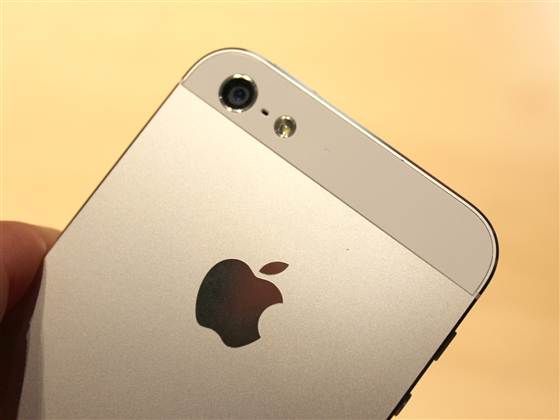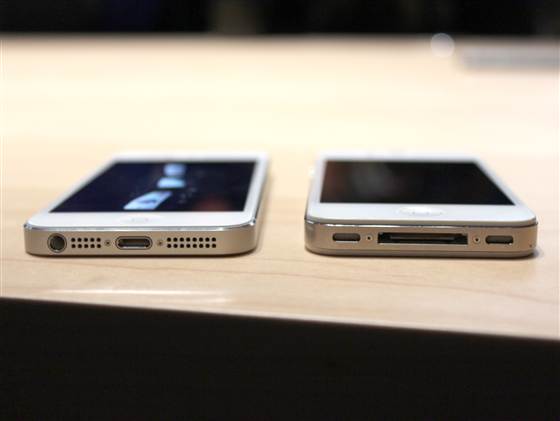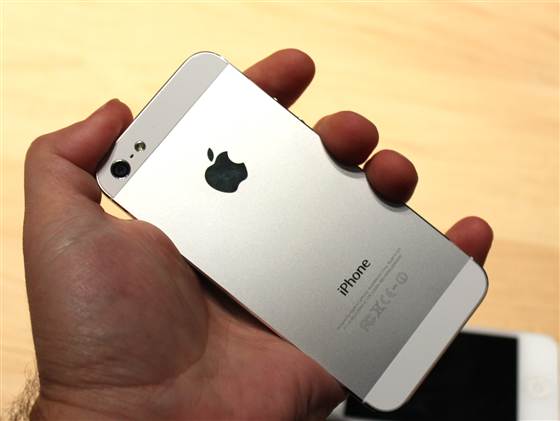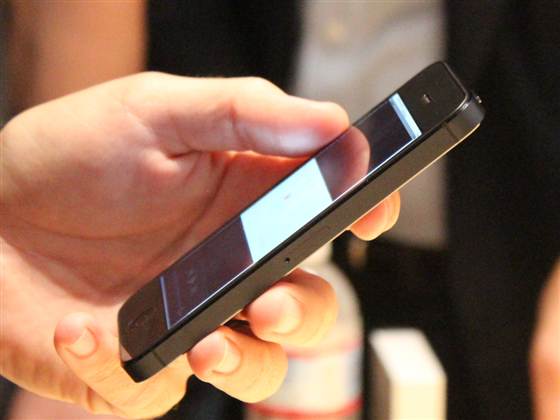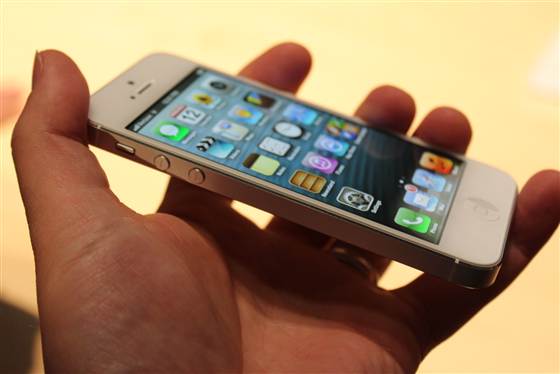The matte aluminum back of a white iPhone 5.
While the iPhone 5 rumors were popping, I couldn't help think this was just some kind of stretched out iPhone 4S. During the keynote presentation, I was impressed by the features but couldn't help continuing on this path: Would it just be the same?
Well, when I finally got the thing in my hand, even for a few minutes, I was delighted to discover how different it is.
An iPhone 5 (left) next to an iPhone 4S.
Yes, the iPhone 5 is thinner and lighter than the iPhone 4S, but not in a plasticky way that would suggest some of Samsung's smartphones. If the iPhone 4S represents the heft and machined precision of a handgun, the iPhone 5 has the impossible physique(体格, 体形) of a laser blaster. It's light and thin in the way that the future should be.
The back of a white iPhone 5.
The matte(不光滑的) finish(抛光;成品表面) on the smartphone's back is a blessing and a curse. I like that there's a lot less glass here for me to shatter(砸碎), but the way it looks takes away from the pure elegance of the iPhone 4 design: Two panes of shiny glass, separated by a steel border. I find that the white iPhone 5 (above) looks a little washed out, less bold(明亮的,醒目的), where the black version (below) is smarter, if perhaps more masculine than its predecessor[(物件、机器的)前身].
The side view of a black iPhone 5.
The taller screen is not as gangly(身材瘦长的) as I has thought, and when I saw a clip of "The Avengers" on it, I could appreciate why the design decision was made. Movies aren't my No. 1 activity on my phone, but the 16x9 ratio is a major standard for movies and more, so it just makes sense.
The white iPhone 5 doesn't feel too much larger in the hand, and the screen makes sense.
There's a springiness to the phone's interface that suggests the stomping A6 processor, but I couldn't load up anything that let me really see the polygons fly. Also, part of that smoother operation could be iOS 6, because much of it — for instance, the Music app — has been retooled to better interact with iCloud and iTunes.
What was a fun thing to test out, even if I never use it in real life, is the camera's Panorama feature: You just hoist(举起) the phone aloft(在空中) and pan(移动拍摄) across your field of view, and you end up with a seamless panoramic image, suitable for framing (if you're any good at photography, that is — alas, I am not).


